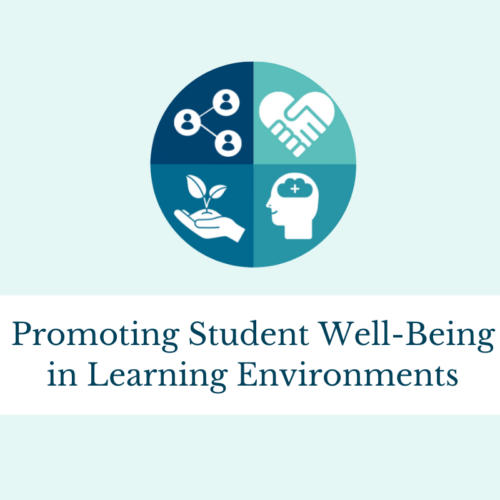In PowerPoint, It’s the Headline that Makes the Difference
PowerPoint and teaching – love it or hate it – is a prevalent combination in our classrooms. We all have seen the default slide format: a short, topical title with a bullet list of text and/or a figure underneath. But is this the best format for your students learning? That is the question that the Teaching Center Academic Services staff considered at their bimonthly journal discussion which focused on a recent study of how slide design impacts student learning.
In this 2013 study, Joanna Garner and Michael Alley used multimedia learning theory to examine how the design of the title of the slide affected audience comprehension. Multimedia learning theory, as pioneered by Rich Mayer of UC Santa Barbara, has laid out specific recommendations for the design of instructional slides (REF). In particular, Garner and Alley examined Mayer’s recommendation to 1) use a sentence headline that states the main assertion of the slide (assertion headline) and 2) support the headline in the body with primarily visual evidence, using text only as necessary. They studied the impact of this design in a communications course for undergraduate engineering students by creating two sets of slides for the same material – one with the default format with topical titles and bullet lists and the other with sentence headlines and visuals. They showed the slides to the engineering students along with an audio recording of a narrative lecture script. The topic of the slides—how the process of magnetic resonance imaging (MRI) is used to detect cancerous tumors—was an unfamiliar topic to the students.
After the presentation, students were given 30 minutes to write a short essay describing the parts of an MRI machine and their role in detecting cancerous tumors and then completed a multiple-choice quiz examining their recall of facts as well as their ability to understand the MRI processes. A week later they had a second quiz consisting of 17 sentence-completion questions examining their retention of details as well as their understanding of the MRI process.
Students who viewed the “assertion sentence” headline slides had higher essay scores for the recall of the correct sequence of the MRI process as well as their understanding of the dynamic nature of the MRI sequence. Interestingly, the only difference between the groups in the multiple-choice quiz taken immediately after the presentations, was for higher order cognitive questions. The assertion-evidence group scored higher on the quiz for higher order cognitive questions. Moreover, the assertion-evidence group scored overall higher on all types of questions in the delayed sentence-completion quiz given one week later.
Garner and Alley examined how presenting students with information as evidence-assertion headlines with minimal text affected both students recall of knowledge as well as their understanding of complex processes. By asking students to write essays as well as take multiple-choice and sentence-completion quizzes they were able to carefully examine students recall and understanding of a complex and dynamic process.
Most university classes include facts that students need to recall such as dates, names, definitions, as well as a variety of complex processes they need to understand, ranging from those in the STEM disciplines to examining underlying causes to understand social and political realities. Using evidence-assertion headlines can help your students to recognize deep features and concepts. The results of this research study as well as others indicate that the design of presentation slides can affect student learning. For more on how to modify your class slides to take advantage of these findings you can read Garner and Alley’s (2013) paper [LINK] and contact the Teaching Center for a consultation.
For examples of slides, see Michael Alley’s Craft of Scientific Presentations website: http://www.craftofscientificpresentations.com/assertion-evidence-approach.html
Garner, J., & Alley, M. (2013). How the design of presentation slides affects audience comprehension: A case for the assertion–evidence approach. International Journal of Engineering Education, 29(6), 1564-1579.

